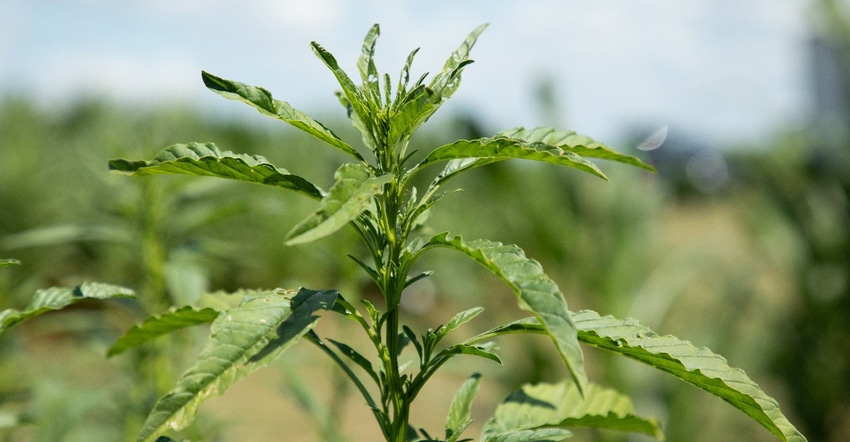August 30, 2019

Farmers are seeking a reprieve after a tough 2019 growing season; however, experts say the impacts will likely be felt for years to come.
“Spring 2020 is an opportunity to start fresh,” says Dean Grossnickle, a Syngenta agronomy service representative based in central Iowa. “The weather this year presented significant challenges to growers by preventing or delaying planting and causing less-than-ideal conditions that helped lead to weed escapes. We are going to have to work hard to control weeds next year.”
Managing the weed seed bank will be a critical factor. “Weeds are prolific seed producers,” he explains. “Just one waterhemp, for instance, can produce over 250,000 seeds. Kochia, marestail, Palmer amaranth — all of these weeds spell trouble if you didn’t control them in 2019."
Weed seeds produced in 2019 will either take root in the spring of 2020 or lay dormant and germinate for years to come. “Take a look at Palmer amaranth and waterhemp,” he says. “A single plant produces a significant number of seeds that may remain viable in the soil for four or more years. This is why we recommend effective herbicide programs. If you don’t manage them before they go to seed, you risk facing weeds in your fields for years to come.”
Use an effective control strategy
Grossnickle has some suggestions to make 2020 easier. “If this year has taught us anything, it’s that we have to use herbicide programs that provide season-long weed control,” he says. “Herbicides are best used as part of a complete weed management system. We have to use other weed control tactics in our production systems.”
Grossnickle recommends a variety of tactics, depending on what you want to achieve.
“Cover crops that produce ample spring biomass are a great way to suppress the emergence of weeds,” he says. “Follow that up with a solid residual herbicide at planting and a timely postemergence herbicide to manage in-season weeds. Use tactics like these to develop robust, effective weed management strategies that incorporate both agronomic practices and herbicides.”
For herbicide options in corn, Grossnickle recommends Acuron and Halex GT. “Being able to apply to corn preplant up to 12 inches tall is a big advantage for a herbicide,” he says. “Follow that up with Halex GT, which can be applied up to 30-inch corn. The flexibility of those two products really helped growers who saw delays this year due to weather.”
Timing is key to effective control
For soybeans, he says Tavium Plus VaporGrip Technology herbicide can be used preplant through early postemergence. “This is a really effective herbicide, combining the contact control of dicamba and the residual control of S-metolachlor,” Grossnickle says. “It’s the first premix residual dicamba herbicide on the market. Tavium is recommended early postemergence following a strong preemergence herbicide, like Boundary 6.5 EC, BroadAxe XC, or Prefix.”
He cautions that timing can be key to effective herbicide applications. “Make sure your postemergence herbicides are applied in a timely manner,” he says. “You don’t want your residuals to lapse, giving weeds a chance to break through. It’s also critical to apply herbicides before weeds reach 4 inches tall, otherwise the herbicide may not be fully effective against them, leading to selection.”
In that same light, Grossnickle says using full labeled rates is key. “You wouldn’t take half an antibiotic when you’re sick. Don’t use a cut herbicide rate,” he adds. “The last thing we want is for a weed to survive the application and bounce back with a resistance to the herbicide.”
Source: Syngenta, which is solely responsible for the information provided and is wholly owned by the source. Informa Business Media and all its subsidiaries are not responsible for any of the content contained in this information asset.
You May Also Like




